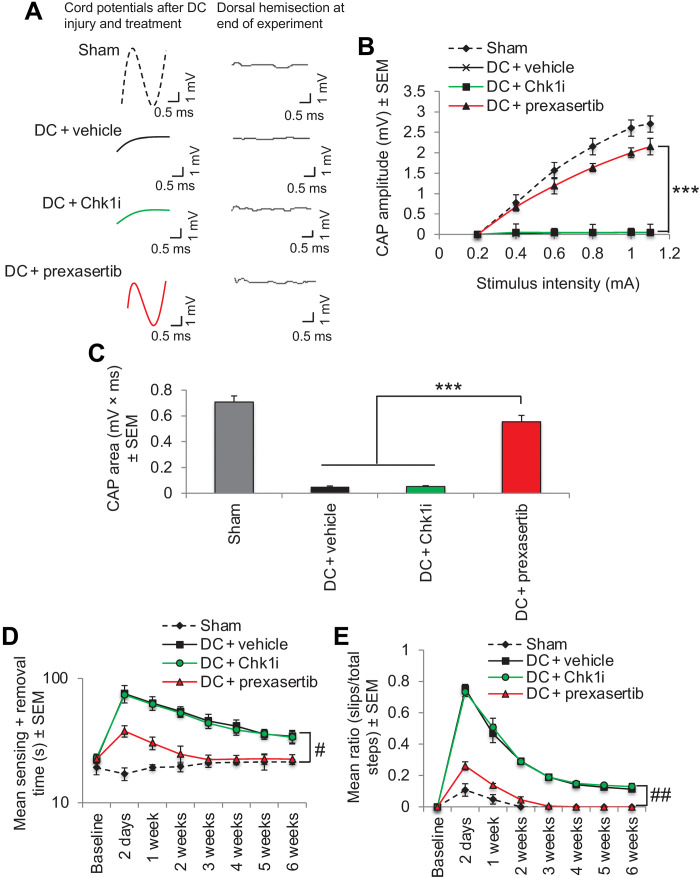Fig. 6. Twenty-four–hour delayed treatment with prexasertib is equally as effective as immediate treatment in restoring electrophysiological, sensory, and locomotor recovery after DC injury.
(A) Spike 2 software–processed CAP traces at 6 weeks after DC injury from representative sham controls, DC + vehicle–, DC + Chk1i–, and DC + prexasertib–treated rats. (B) Negative CAP amplitudes and (C) CAP areas were significantly attenuated in DC + vehicle– and DC + Chk1i–treated rats but were restored in DC + prexasertib–treated rats [P < 0.0001, one-way ANOVA (main effect)]. (D) Mean tape sensing and removal times were restored to normal 3 weeks after treatment with shChk2, while a significant deficit remained in DC + vehicle– and DC + Chk1i–treated rats (#P < 0.00014, generalized linear mixed models over the whole 6 weeks). (E) Mean error ratio to show the number of slips versus total number of steps in the horizontal ladder walking test also returns to normal 3 weeks after treatment with prexasertib with a deficit remaining in DC + vehicle– and DC + Chk1i–treated rats (##P < 0.00011, linear-mixed models over the whole 6 weeks). n = 6 rats per treatment per test, three independent repeats (total, n = 18 rats per treatment per test).

